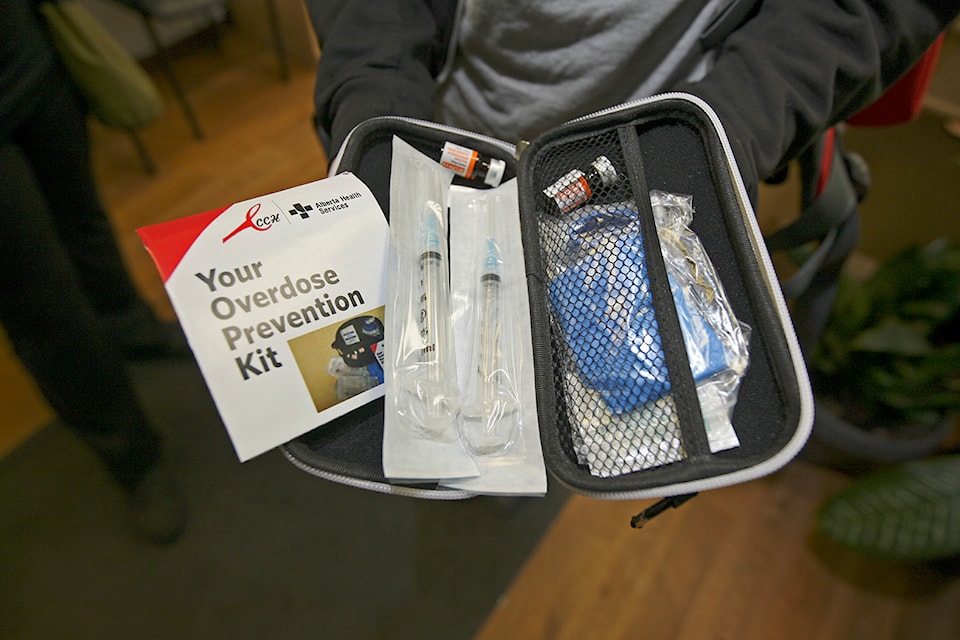Red Deer failed to get needed services as part of the province’s expanded programming to reduce opioid deaths — including those from fentanyl — says the executive director of Turning Point.
“At this time when we know things are getting bad and we’re suppose to be increasing services, I’m not seeing an increase in services. The clients aren’t seeing an increase in services. But what we have had is an increase in deaths,” Jennifer Vanderschaeghe said.
In Alberta Health Services Central Zone, fatal fentanyl overdoses increased to 16 in the fourth quarter of 2016 from five in the third quarter.
The zone had 37 fentanyl deaths in 2016, 34 in 2015 and 13 in 2014.
Across Alberta there were a total of 343 deaths in 2016, 257 in 2015, and 117 in 2014.
On Tuesday, the province made naloxone kits more accessible by making it an unscheduled drug so staff other than nurses could provide the kits at community agencies like Turning Point.
“Delisting probably means an increase to naloxone kits in rural Central Alberta, but I’m not getting any more additional staff time to do that,” Vanderschaeghe said.
She said 20 minutes is the least amount of time needed to dispense naloxone which can reverse the symptoms of fentanyl and other opioid poisoning.
“The only people who need less than about 20 minutes are people who have had the training multiple, multiple times and have not used their kit on someone. The time that it takes to hear from and process and support the person who used the kit is upwards of an hour.”
She said those who have experienced the trauma of using naloxone to help save a friend need time and care.
Red Deer was also not among the communities to get an opioid addiction treatment clinic.
“In Red Deer we did not receive any additional services in addictions. We didn’t receive any additional access to suboxone. We didn’t receive any additional access to methadone. Nothing has happened in Red Deer, in Central Zone, around increased access to addictions treatment,” Vanderschaeghe said.
“We have an opioid epidemic. We have a lot of people who use opioids. We have a lot of people who have addictions. At the end of the day, the naloxone kit is a measure to keep people alive. It is ultimately an access point to access addictions services so that they can access appropriate addictions treatment.”
Another step to expand the provincial naloxone program includes allowing first responders — firefighters, police and peace officers — to be trained to administer injectable naloxone.
Vanderschaeghe said firefighters in Red Deer are fire medics and could already provide naloxone, but making it available to peace officers who visit homeless camps could be helpful in the city.
szielinski@www.reddeeradvocate.com
